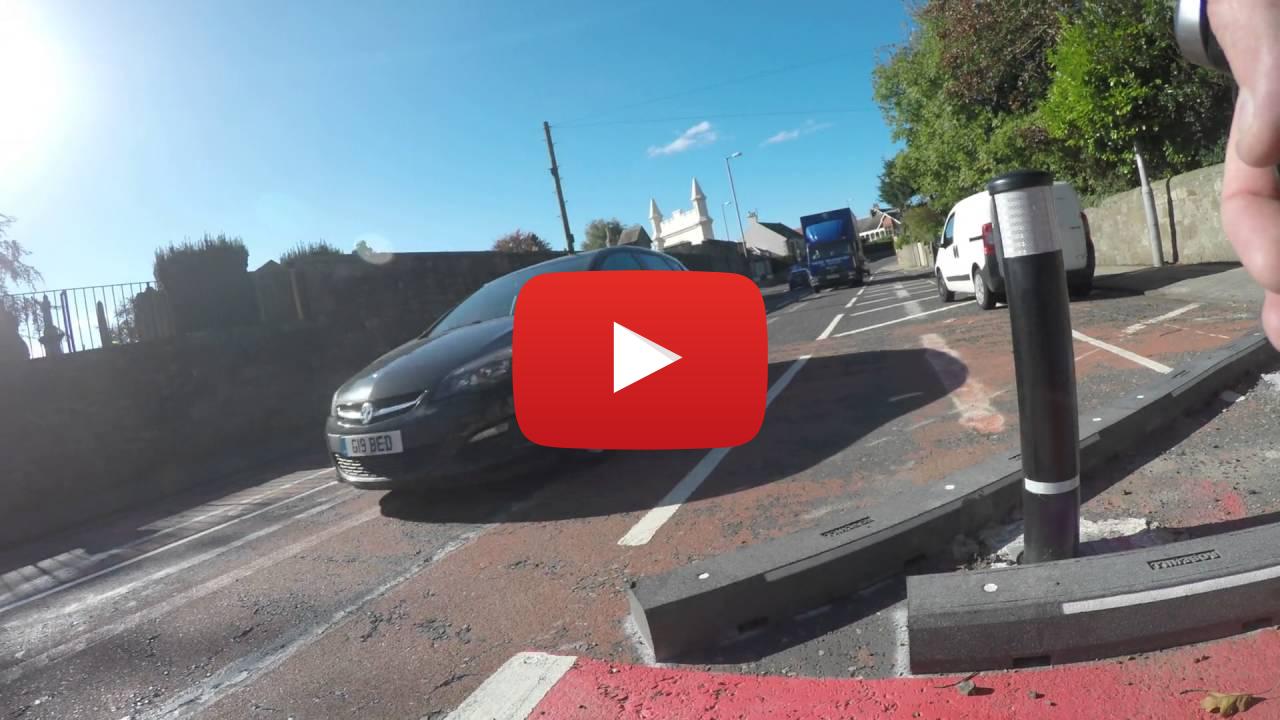The number of Heavy Goods Vehicles travelling through Carlisle’s city centre is estimated to have been reduced by more than a third since the new multi-million euro Carlisle Northern Development Route opened in February 2012.
August 17, 2012
Read time: 3 mins
The number of Heavy Goods Vehicles travelling through Carlisle’s city centre is estimated to have been reduced by more than a third since the new multi-million euro Carlisle Northern Development Route opened in February 2012.
Information from a network of 20 permanent and temporary traffic counters around the city showing ‘before and after’ CNDR road usage is said to be starting to build a more meaningful picture of the impact the new road has had on Carlisle.
Detailed information from the traffic counters is now available via an interactive pin map on Cumbria County Council’s (CCC) website at %$Linker:External <?xml version="1.0" encoding="utf-16"?><dictionary /> 0 0 0 oLinkExternal www.cumbria.gov.uk/cndr cumbria false http://www.cumbria.gov.uk/cndr false false %>
It shows a marked reduction in both cars and HGVs along the main north to south arterial route through the city – the A7 and A595 – as an average of more than 10,000 vehicles a day use the new 8.25km/5.13-mile road.
Carlisle’s busiest stretch of road, the A595 at Castle Way, has shown a 16% reduction in all vehicles from 38,083 a day before the opening of CNDR to 32,050 afterwards (with a 41% reduction in HGVs from 6,860 to 4,060). Other city centre hotspots have shown similar reductions, with the A7 at Stanwix Bank showing a 16% reduction in all vehicles and a 32% reduction in HGVs.
CNDR is said by CCC to have quickly become a key route to travel between the south west of the city and the industrial areas to the north - a big factor for employers looking to develop good communications channels in areas ripe for commercial development.
As expected, there are higher levels of traffic on certain radial routes that have direct links to the CNDR. CCC says it has already set aside additional capital funding to counter this effect and also improve links to CNDR for pedestrians and cyclists along these radial routes.
A spokesperson for CCC warned that as road usage data can be skewed by a number of unrelated external factors, from the weather and the economy to what’s on telly, these new CNDR related figures need to be treated with an element of caution. Traffic engineers will carry out a more detailed traffic movement study later this year, which will also assess average journey times.
Councillor Tony Markley, Cumbria County Council's Cabinet member responsible for highways and economy, said: "Carlisle has embraced its new major road. Both commuters and industry in North Cumbria have quickly adjusted their travelling habits to get the full benefits from CNDR. This project has been a huge investment for the county council and one which will reap rewards for many years to come in terms of economic and environmental payback.”
Information from a network of 20 permanent and temporary traffic counters around the city showing ‘before and after’ CNDR road usage is said to be starting to build a more meaningful picture of the impact the new road has had on Carlisle.
Detailed information from the traffic counters is now available via an interactive pin map on Cumbria County Council’s (CCC) website at %$Linker:
It shows a marked reduction in both cars and HGVs along the main north to south arterial route through the city – the A7 and A595 – as an average of more than 10,000 vehicles a day use the new 8.25km/5.13-mile road.
Carlisle’s busiest stretch of road, the A595 at Castle Way, has shown a 16% reduction in all vehicles from 38,083 a day before the opening of CNDR to 32,050 afterwards (with a 41% reduction in HGVs from 6,860 to 4,060). Other city centre hotspots have shown similar reductions, with the A7 at Stanwix Bank showing a 16% reduction in all vehicles and a 32% reduction in HGVs.
CNDR is said by CCC to have quickly become a key route to travel between the south west of the city and the industrial areas to the north - a big factor for employers looking to develop good communications channels in areas ripe for commercial development.
As expected, there are higher levels of traffic on certain radial routes that have direct links to the CNDR. CCC says it has already set aside additional capital funding to counter this effect and also improve links to CNDR for pedestrians and cyclists along these radial routes.
A spokesperson for CCC warned that as road usage data can be skewed by a number of unrelated external factors, from the weather and the economy to what’s on telly, these new CNDR related figures need to be treated with an element of caution. Traffic engineers will carry out a more detailed traffic movement study later this year, which will also assess average journey times.
Councillor Tony Markley, Cumbria County Council's Cabinet member responsible for highways and economy, said: "Carlisle has embraced its new major road. Both commuters and industry in North Cumbria have quickly adjusted their travelling habits to get the full benefits from CNDR. This project has been a huge investment for the county council and one which will reap rewards for many years to come in terms of economic and environmental payback.”







